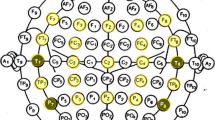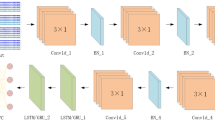Abstract
Biometric representation of humans often requires the tasks such as identification and verification. This can be done using various modalities such as fingerprint, face, retina, voice, etc. However, existing biometric systems are vulnerable to various security attacks. Recently, Electroencephalography (EEG) is considered to be one of the alternatives to develop a robust biometric system. Brain activities represented by EEG signals are more sensitive, secure, and difficult to copy and steal. In this paper, we propose a spatio-temporal dense architecture for EEG-based person identification. Firstly, raw EEG are processed to extract robust and informative spatial features using Convolutional Neural Networks (CNN) as they are known for automatic feature extraction from the raw data. Then, a Long short-term memory (LSTM) network is utilized to process temporal data and person identification is carried out. The experiment has been carried out on a publicly available dataset consisting of EEG of 109 subjects. The architecture is tested on two baseline situations, i.e., eye closed (EC) and the eye opened (EO). Person identification rates of 99.95% and 98% have been recorded for EC and EO states using the proposed scheme. Experimental results demonstrate the robustness of the proposed scheme in terms of person identification and outstrip existing works.










Similar content being viewed by others
References
Abdullah MK, Subari KS, Loong JLC, Ahmad NN (2010) Analysis of the eeg signal for a practical biometric system. World Acad Sci Eng Technol 68:1123–1127
Antipov G, Berrani S-A, Ruchaud N, Dugelay J-L (2015) Learned vs. hand-crafted features for pedestrian gender recognition. In: Proceedings of the 23rd ACM international conference on multimedia, pp 1263–1266
Cecotti H, Graeser A (2008) Convolutional neural network with embedded fourier transform for eeg classification. In: 19th international conference on pattern recognition, pp 1–4
Chan AD, Hamdy MM, Badre A, Badee V (2008) Wavelet distance measure for person identification using electrocardiograms. IEEE Trans Instrum Meas 57(2):248–253
El-Fiqi H, Wang M, Salimi N, Kasmarik K, Barlow M, Abbass H (2018) Convolution neural networks for person identification and verification using steady state visual evoked potential. In: IEEE international conference on systems, man, and cybernetics, pp 1062–1069
Faust O, Hagiwara Y, Hong TJ, Lih OS, Acharya UR (2018) Deep learning for healthcare applications based on physiological signals: a review. Computer methods and programs in biomedicine
Fraschini M, Hillebrand A, Demuru M, Didaci L, Marcialis GL (2015) An eeg-based biometric system using eigenvector centrality in resting state brain networks. IEEE Signal Process Lett 22(6):666–670
Glorot X, Bengio Y (2010) Understanding the difficulty of training deep feedforward neural networks. In: Proceedings of the thirteenth international conference on artificial intelligence and statistics, pp 249–256
Goldberger AL, Amaral LA, Glass L, Hausdorff JM, Ivanov PC, Mark RG, Mietus JE, Moody GB, Peng C. -K., Stanley HE (2000) Physiobank, physiotoolkit, and physionet. Circulation 101(23):e215–e220
Kaur B, Singh D (2017) Neuro signals: a future biomertic approach towards user identification. In: 7th international conference on cloud computing, data science & engineering-confluence, pp 112–117
Keshishzadeh S, Fallah A, Rashidi S (2016) Improved eeg based human authentication system on large dataset. In: 24th Iranian conference on electrical engineering, pp 1165–1169
Khurana V, Kumar P, Saini R, Roy PP (2018) Eeg based word familiarity using features and frequency bands combination. Cogn Syst Res 49:33–48
Kostílek M, Št’astnỳ J (2012) Eeg biometric identification: repeatability and influence of movement-related eeg. In: International conference on applied electronics, pp 147–150
Kumar P, Saini R, Roy PP, Sahu PK, Dogra DP (2018) Envisioned speech recognition using eeg sensors. Pers Ubiquit Comput 22(1):185–199
Kumar P, Saini R, Sahu PK, Roy PP, Dogra DP, Balasubramanian R (2017) Neuro-phone: an assistive framework to operate smartphone using eeg signals. In: 2017 IEEE region 10 symposium, pp 1–5
Kumari P, Vaish A (2015) Brainwave based user identification system: a pilot study in robotics environment. Robot Auton Syst 65:15–23
La Rocca D, Campisi P, Vegso B, Cserti P, Kozmann G, Babiloni F, Fallani FDV (2014) Human brain distinctiveness based on eeg spectral coherence connectivity. IEEE Trans Biomed Eng 61(9):2406–2412
LeCun Y, Bengio Y et al (1995) Convolutional networks for images, speech, and time series. The handbook of brain theory and neural networks 3361(10):1–14
Lee H, Grosse R, Ranganath R, Ng AY (2009) Convolutional deep belief networks for scalable unsupervised learning of hierarchical representations. In: Proceedings of the 26th annual international conference on machine learning, pp 609–616
Lee HJ, Kim HS, Park KS (2013) A study on the reproducibility of biometric authentication based on electroencephalogram (eeg). In: 2013 6th international IEEE/EMBS conference on neural engineering, pp 13–16
Mao Z, Yao WX, Huang Y (2017) Eeg-based biometric identification with deep learning. In: 8th international IEEE/EMBS conference on neural engineering, pp 609–612
Marcel S, Millán JDR (2007) Person authentication using brainwaves (EEG) and maximum a posteriori model adaptation. IEEE Trans Pattern Anal Mach Intell 29 (4):743–752
Näpflin M, Wildi M, Sarnthein J (2007) Test–retest reliability of resting eeg spectra validates a statistical signature of persons. Clin Neurophysiol 118(11):2519–2524
Nurse E, Mashford BS, Yepes AJ, Kiral-Kornek I, Harrer S, Freestone DR (2016) Decoding eeg and lfp signals using deep learning: heading truenorth. In: Proceedings of the ACM international conference on computing frontiers, pp 259–266
Palaniappan R, Mandic DP (2007) Biometrics from brain electrical activity: a machine learning approach. IEEE Trans Pattern Anal Mach Intell 29(4):738–742
Poulos M, Rangoussi M, Alexandris N (1999a) Neural network based person identification using eeg features. In: IEEE international conference on acoustics, speech, and signal processing, vol 2, pp 1117–1120
Poulos M, Rangoussi M, Chrissikopoulos V, Evangelou A (1999b) Person identification based on parametric processing of the eeg. In: The 6th IEEE international conference on electronics, circuits and systems, vol 1, pp 283–286
Riera A, Soria-Frisch A, Caparrini M, Grau C, Ruffini G (2008) Unobtrusive biometric system based on electroencephalogram analysis. EURASIP J Adv Signal Process 2008:1–8
Rodrigues D, Silva GF, Papa JP, Marana AN, Yang X-S (2016) Eeg-based person identification through binary flower pollination algorithm. Expert Syst Appl 62:81–90
Schalk G, McFarland DJ, Hinterberger T, Birbaumer N, Wolpaw JR (2004) Bci2000: a general-purpose brain-computer interface (bci) system. IEEE Trans Biomed Eng 51(6):1034–1043
Schirrmeister RT, Springenberg JT, Fiederer LDJ, Glasstetter M, Eggensperger K, Tangermann M, Hutter F, Burgard W, Ball T (2017) Deep learning with convolutional neural networks for eeg decoding and visualization. Hum Brain Mapp 38(11):5391–5420
Spampinato C, Palazzo S, Kavasidis I, Giordano D, Souly N, Shah M (2017) Deep learning human mind for automated visual classification. In: Proceedings of the IEEE conference on computer vision and pattern recognition, pp 6809–6817
Su F, Xia L, Cai A, Wu Y, Ma J (2010) Eeg-based personal identification: from proof-of-concept to a practical system. In: 20th international conference on pattern recognition, pp 3728–3731
Su F, Zhou H, Feng Z, Ma J (2012) A biometric-based covert warning system using eeg. In: 5th IAPR International conference on biometrics, pp 342–347
Thomas KP, Vinod A (2018) Eeg-based biometric authentication using gamma band power during rest state. Circuits Systems Signal Process 37(1):277–289
Thomas KP, Vinod AP (2016) Utilizing individual alpha frequency and delta band power in eeg based biometric recognition. In: IEEE international conference on systems, man, and cybernetics, pp 004787–004791
Wilaiprasitporn T, Ditthapron A, Matchaparn K, Tongbuasirilai T, Banluesombatkul N, Chuangsuwanich E (2018) Affective eeg-based person identification using the deep learning approach. arXiv preprint arXiv:1807.03147
Yadava M, Kumar P, Saini R, Roy PP, Dogra DP (2017) Analysis of eeg signals and its application to neuromarketing. Multimed Tools Appl 76(18):19087–19111
Yang S, Deravi F, Hoque S (2016) Task sensitivity in eeg biometric recognition. Pattern Anal Applic 21:1–13
Yildirim Ö (2018) A novel wavelet sequence based on deep bidirectional lstm network model for ecg signal classification. Comput Biol Med 96:189–202
Author information
Authors and Affiliations
Corresponding author
Additional information
Publisher’s note
Springer Nature remains neutral with regard to jurisdictional claims in published maps and institutional affiliations.
Rights and permissions
About this article
Cite this article
Das, B.B., Kumar, P., Kar, D. et al. A spatio-temporal model for EEG-based person identification. Multimed Tools Appl 78, 28157–28177 (2019). https://doi.org/10.1007/s11042-019-07905-6
Received:
Revised:
Accepted:
Published:
Issue Date:
DOI: https://doi.org/10.1007/s11042-019-07905-6




